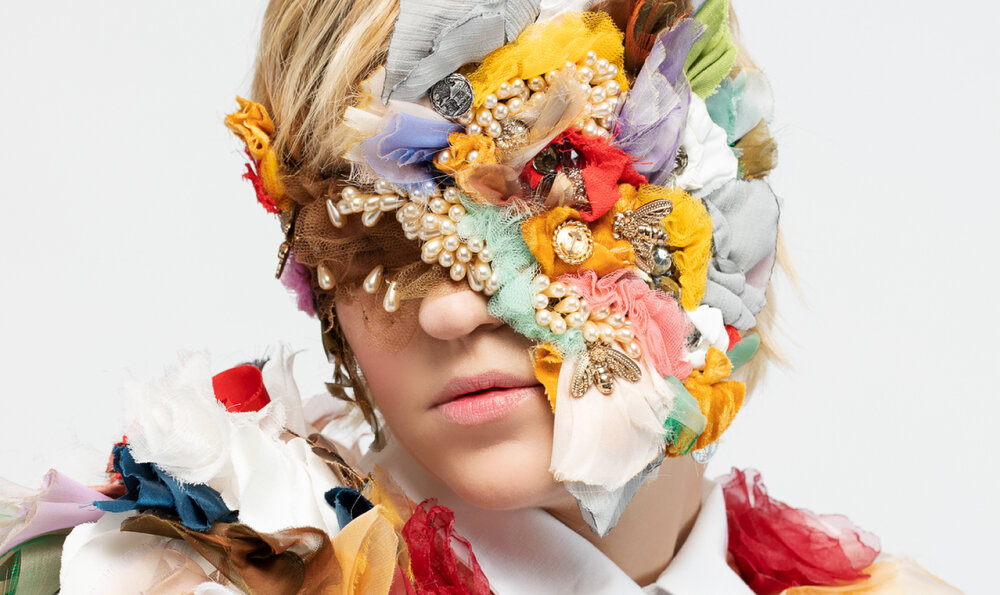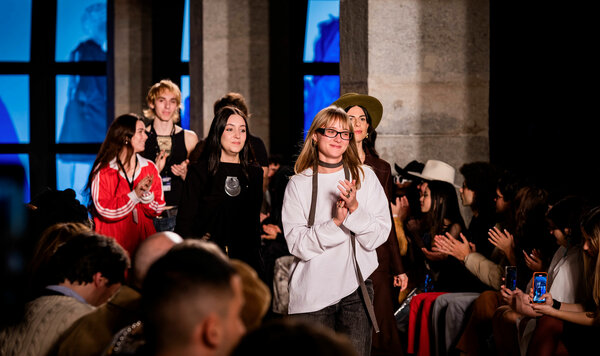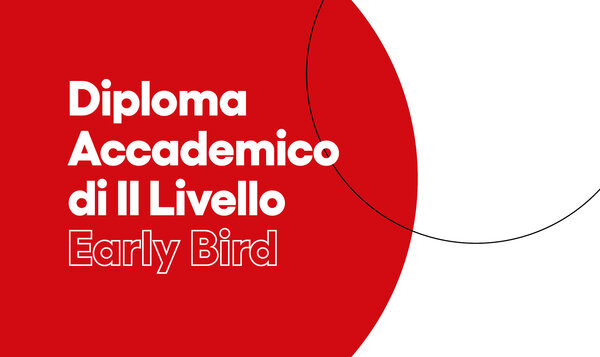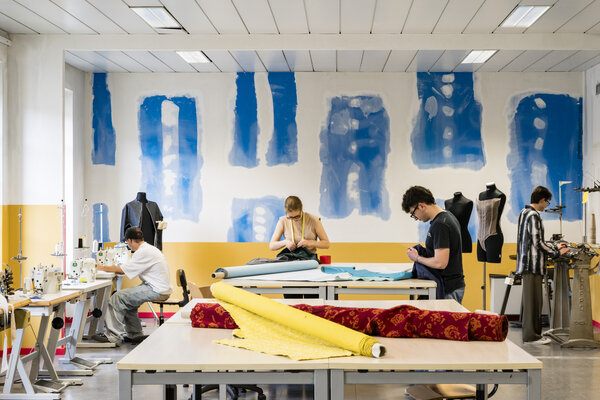Students of the Fashion Design course at IED Torino used the lockdown as an opportunity to experiment with a new expressive language that goes beyond traditional paradigms.

RE UNION: BLENDING THE REAL AND THE VIRTUAL IN IED FASHION COLLECTIONS
Date
19 November 2020
Exploring the future of fashion: not only the principles of sustainability and environmental responsibility in clothes manufacturing, but also the new expressive languages and innovative paradigms that can be used to create and present new collections. That is precisely what the students of the three-year Fashion Design course at IED Torino decided to do with their thesis project, Re Union. During an academic year in which it felt like the world was standing still and access to the school, workshops and tailoring studios was made impossible due to social distancing, these twenty-four young designers still developed and finalised as many men's and women's autumn/winter collections, working with digital tools and creatively transforming the limitations of lockdown into an opportunity to experiment outside the box.
In the preliminary stages of research and concept development, started before the Covid-19 pandemic took hold, focused classroom sessions and visits to production facilities and workshops with experts in the field allowed the students to understand and internalise various problems and solutions relating to the theme of sustainability. This theme became no longer merely a goal, but the basis and premise of the concept for all 25 outfits in each collection. With the sudden arrival of the public health emergency and the immediate switch to a distance-learning framework, the students became familiar with new ways of working and discovered digital tools as the key to moving forward with their project. Along with constant dialogue with faculty and with course coordinator Alessandra Montanaro through remote lessons and reviews, another fundamental tool for the students was CLO3D, an innovative virtual prototyping program that represents the future of the fashion industry. The software allowed to develop models and prototypes virtually, while working at home on the digital network, creating faithful simulations of wearability, setting, and runway presentation for the garments. Lastly, connected remotely, the students directed photo and video shoots of their outfits – produced by Ilaria Turchetti, tailoring workshop assistant, and Gianpiero Capitani, model maker and tailor, with fabrics provided by partner companies – leading the set, and guiding the styling and photography work, according to designs previously drawn up with IED faculty members Anna Neretto and Giorgia Mannavola.
It is precisely this centring of digital technologies at every stage of the design process, from preliminary designs to their manufacture and promotion, that boosts the development of an innovative paradigm for presenting the results: in the video show Re Union, the shots of the garments worn by models and the simulated runway of CLO3D follow one another in a hypnotic flow. This experimentation with a new mode of expression, which finds both inspiration and implementation in the digital world, conveys the reality of 2020. It embraces challenge, and the potential of a transformed everyday life, giving rise to an aesthetic language that can challenge and overcome the boundary between the virtual and the real.
Projects were designed by: Afra Alavioun, Ramona Ausino, Valentina Ballesio, Sofia Cagliero, Lucrezia Carbone, Marzia Casalotto Cossu, Noemi Coppola, Aminata Diop, Miriam Filippa, Gaia Fornasieri, Martina Gaggero, Francesca Gheller, Gaia Gramaglia, Letizia Guglielmino, Ilaria Malltezi, Elena Manenti, Giorgia Moschini, Elena Occhiena, Nuria Piccirillo, Elena Pistotti, Vittorio Rossi, Jessica Russo, Sara Salvio, Cristina Trigilia, graduates of the three-year programme in Fashion Design for the academic year 2019/20 at IED Torino, coordinated by Alessandra Montanaro.
Ph. Jessica Russo, The Gaia Hypothesis, credits PEPE fotografia








